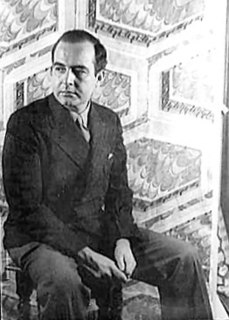
Samuel Osmond Barber II was an American composer, pianist, conductor, baritone, and music educator. One of the most celebrated composers of the 20th century; music critic Donal Henahan stated, "Probably no other American composer has ever enjoyed such early, such persistent and such long-lasting acclaim." Principally influenced by nine years of composition studies with Rosario Scalero at the Curtis Institute and more than twenty-five years of study with his uncle, the composer Sidney Homer, Barber's music usually eschewed the experimental trends of musical modernism in favor of utilizing traditional 19th-century harmonic language and formal structure that embraced lyricism and emotional expression. However, elements of modernism were adopted by Barber after 1940 in a limited number of his compositions, such as an increased use of dissonance and chromaticism in the Cello Concerto (1945) and Medea's Dance of Vengeance (1955), and the use of tonal ambiguity and a narrow use of serialism in his Piano Sonata (1949), Prayers of Kierkegaard (1954), and Nocturne (1959).
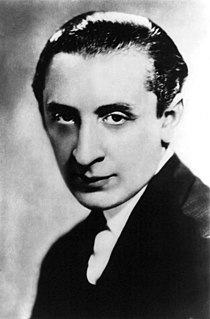
Vladimir Samoylovich Horowitz was a Russian-born, American classical pianist and composer, who lived most of his life in the United States. Considered one of the greatest pianists of all time, he was known for his virtuoso technique, tone color, and the excitement that was engendered by his playing.
The NBC Symphony Orchestra was a radio orchestra conceived by David Sarnoff, the president of the Radio Corporation of America, especially for the conductor Arturo Toscanini. The NBC Symphony performed weekly radio concert broadcasts with Toscanini and other conductors and served as house orchestra for the NBC network. The orchestra's first broadcast was on November 13, 1937 and it continued until disbanded in 1954. A new ensemble, independent of the network, called the Symphony of the Air, followed. It was made up of former members of the NBC Symphony Orchestra and performed from 1954 to 1963, particularly under Leopold Stokowski.
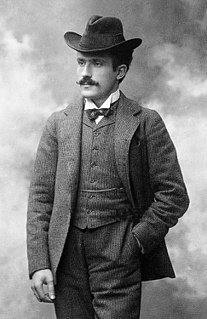
Arturo Toscanini was an Italian conductor. He was one of the most acclaimed and influential musicians of the late 19th and of the 20th century, renowned for his intensity, his perfectionism, his ear for orchestral detail and sonority, and his eidetic memory. He was at various times the music director of La Scala in Milan and the New York Philharmonic. Later in his career he was appointed the first music director of the NBC Symphony Orchestra (1937–54), and this led to his becoming a household name through his radio and television broadcasts and many recordings of the operatic and symphonic repertoire.

Kirill Petrovich Kondrashin, was a Soviet and Russian conductor.
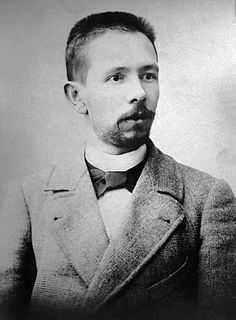
Vasily Sergeyevich Kalinnikov was a Russian composer. His body of work consists of two symphonies, several additional orchestral works, and numerous songs, all of them imbued with characteristics of folksong. His symphonies, particularly the First, were frequently performed in the early 20th century.

Dmitri Shostakovich’s Symphony No. 7 in C major, Op. 60, nicknamed the Leningrad, was begun in Leningrad, completed in the city of Samara in December 1941, and premiered in that city on March 5, 1942. At first dedicated to Lenin, it was eventually submitted in honor of the besieged city of Leningrad, where it was first played under dire circumstances on August 9, 1942, during the siege by German and Finnish forces. The Leningrad soon became popular in both the Soviet Union and the West as a symbol of resistance to fascism and totalitarianism, thanks in part to the composer's microfilming of the score in Samara and its clandestine delivery, via Tehran and Cairo, to New York, where Arturo Toscanini led a broadcast performance and Time magazine placed Shostakovich on its cover. That popularity faded somewhat after 1945, but the work is still regarded as a major musical testament to the 27 million Soviet people who lost their lives in World War II, and it is often played at Leningrad Cemetery, where half a million victims of the 900-day Siege of Leningrad are buried.

Adagio for Strings is a work by Samuel Barber, arguably his best known, arranged for string orchestra from the second movement of his String Quartet, Op. 11.
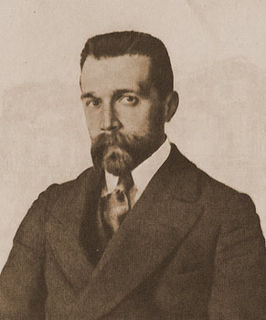
Nikolai Yakovlevich Myaskovsky or Miaskovsky or Miaskowsky, was a Russian and Soviet composer. He is sometimes referred to as the "Father of the Soviet Symphony". Myaskovsky was awarded the Stalin Prize five times, more than any other composer.

Artur Rodziński was a Polish conductor of opera and symphonic music. He is especially noted for his tenures as music director of the Cleveland Orchestra and the New York Philharmonic in the 1930s and 1940s.

Romeo and Juliet, Op. 64, is a ballet by Sergei Prokofiev based on William Shakespeare's play Romeo and Juliet. First composed in 1935, it was substantially revised for its Soviet premiere in early 1940. Prokofiev reused music from the ballet in three suites for orchestra and a solo piano work.
Ozan Marsh was a pianist active in concert performances throughout the world as well as across the United States.
Elie Siegmeister was an American composer, educator and author.

Vivian Della Chiesa was an American lyric soprano who achieved a high level of popularity in the United States singing on the radio during the 1940s and the early 1950s. She performed a wide variety of classical and popular works from opera to musical theatre, jazz, and popular songs. She sang on a number of radio programs during her career, including The American Album of Familiar Music, The American Melody Hour, and The Standard Hour among others. A particularly important triumph for her radio career was a 1943 radio concert of Brahms’s Deutsches Requiem with conductor Arturo Toscanini and the NBC Symphony Orchestra. In addition to her radio career, Della Chiesa performed actively on the opera stage, mostly at the Chicago City Opera Company and the Chicago Opera Company, during the 1930s and 1940s. In the 1950s, she became a successful nightclub singer, headlining at major clubs in Las Vegas, Reno, and in major venues in other cities throughout the United States. After her singing career ended she worked as a voice teacher and a fundraiser for charity.
Samuel Barber's Essay for Orchestra, Op. 12, completed in the first half of 1938, is an orchestral work in one movement. It was given its first performance by Arturo Toscanini with the NBC Symphony Orchestra on November 5, 1938 in New York in a radio broadcast concert in which the composer's Adagio for Strings saw its first performance. It lasts around 8 minutes and is dedicated "To C.E." The essay is now known as the First Essay for Orchestra after Barber wrote his Second Essay for Orchestra in 1942. He also wrote a Third Essay in 1978.
Alan Shulman was an American composer and cellist. He wrote a considerable amount of symphonic music, chamber music, and jazz music. Trumpeter Eddie Bailey said, "Alan had the greatest ear of any musician I ever came across. He had better than perfect pitch. I've simply never met anyone like him." Some of his more well known works include his 1940 Neo-Classical Theme and Variations for Viola and Piano and his A Laurentian Overture, which was premiered by the New York Philharmonic in 1952 under the baton of Guido Cantelli. Also of note is his 1948 Concerto for Cello and Orchestra which was also premiered by the New York Philharmonic with cellist Leonard Rose and conductor Dmitri Mitropoulos. Many of Shulman's works have been recorded, and the violinist Jascha Heifetz and jazz clarinetist Artie Shaw have been particular exponents of his work both in performance and on recordings.

Arturo Toscanini was an Italian conductor. He was one of the most acclaimed musicians of the late 19th and 20th century. Toscanini was a prolific recording artist, having conducted many recordings from 1920 until his retirement in 1954.

Robert Clarence Raybould was an English conductor, pianist and composer who conducted works ranging from musical comedy and operetta, Gilbert and Sullivan to the standard classical repertoire. He also championed works by contemporary, particularly British, composers.
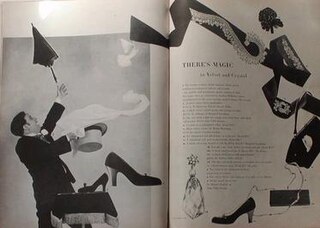
Andrew McKinley was an American operatic tenor, violinist, arts administrator, music educator, and school administrator. Although he mainly performed in the United States, he had an active international singing career with major opera companies and symphony orchestras from the 1940s through the 1960s. His repertoire spanned a wide range, from leading tenor parts to character roles.

Dmitry Borisovich Kabalevsky was a Soviet composer and teacher of Russian gentry descent.













